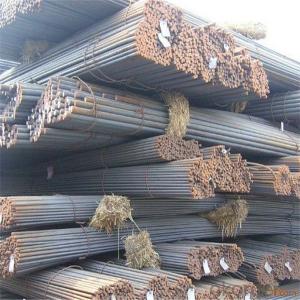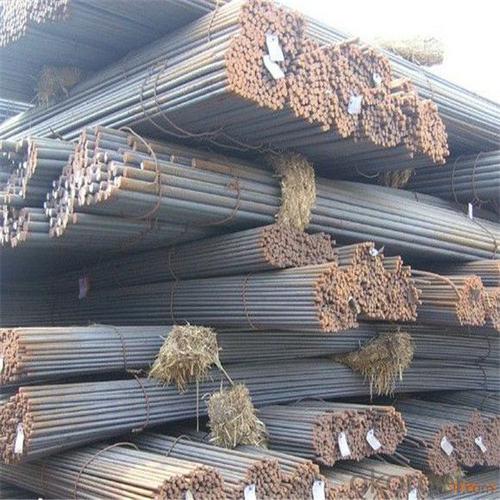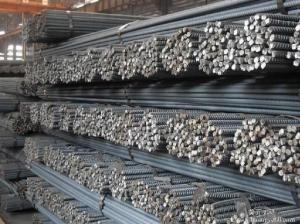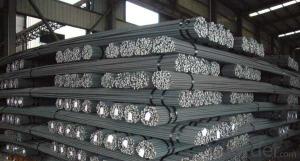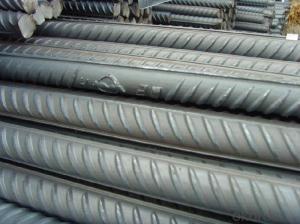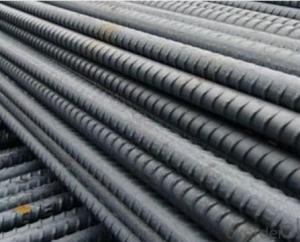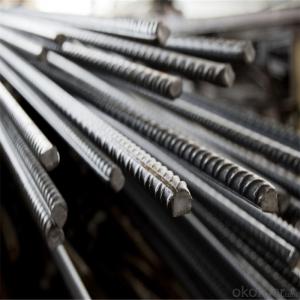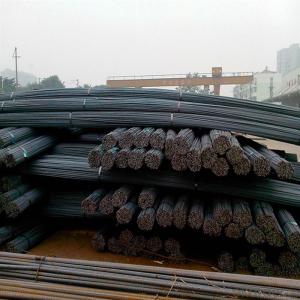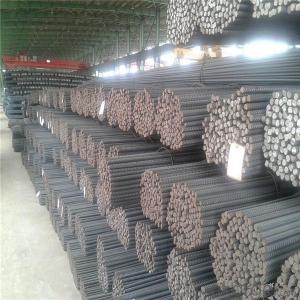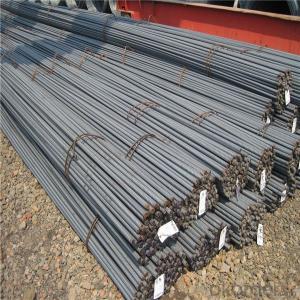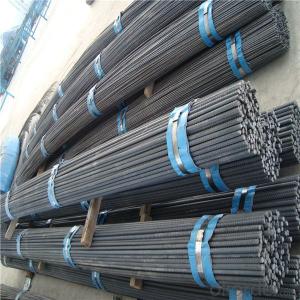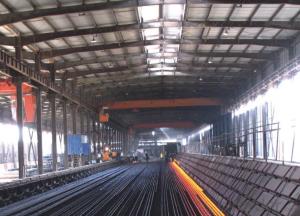Steel rebar 12mm 16mm for real estate constraction
- Loading Port:
- Tianjin
- Payment Terms:
- TT OR LC
- Min Order Qty:
- 100 m.t.
- Supply Capability:
- 18000 m.t./month
OKorder Service Pledge
OKorder Financial Service
You Might Also Like
Specification
Steel rebar is bars of steel commonly used in construction, especially for reinforcing concrete structures such as
driveways, foundations, walls, and columns. These bars come in different sizes and strength grades, and can be
smooth or may include deformations that provide greater adhesion for concrete poured over the bars. When used
in poured concrete, the bars are typically placed in a grid pattern, the concrete poured over them, and then readjusted
to maintain the proper shape while the concrete sets. Steel rebar can be purchased from a number of manufacturers
and is often found at construction retailers or large hardware stores.
Our Advantage: High quality steel products from 1 class mills in China
Reasonable price
Professionalism of the products
On-time delivery
Complete documents and certificates
Sincere service to meet our clients' requirements
Product Description :
Chemical composition (%): | Steel | C | Si | Mn | P | S | Ceq | ||||
HRB335 |
0.25 |
0.80 |
1.60 |
0.045 |
0.045 | 0.52 | |||||
HRB400 | 0.54 | ||||||||||
HRB500 | 0.55 | ||||||||||
Mechanical properties | Steel | Rel/ MPa | Rm/ MPa | A/ % | Agt/ % | ||||||
≥ | |||||||||||
HRB335 | 335 | 455 | 17 |
7.5 | |||||||
HRB400 | 400 | 540 | 16 | ||||||||
HRB500 | 500 | 630 | 15 | ||||||||
Package: | Standard export packing or as customer's request | ||||||||||
Application: | Construction, building, bridge, road. ect | ||||||||||
Payment terms | 1).100% irrevocable L/C at sight. | ||||||||||
Delivery time | 15-30 days after receipt of L/C or deposit by T/T | ||||||||||
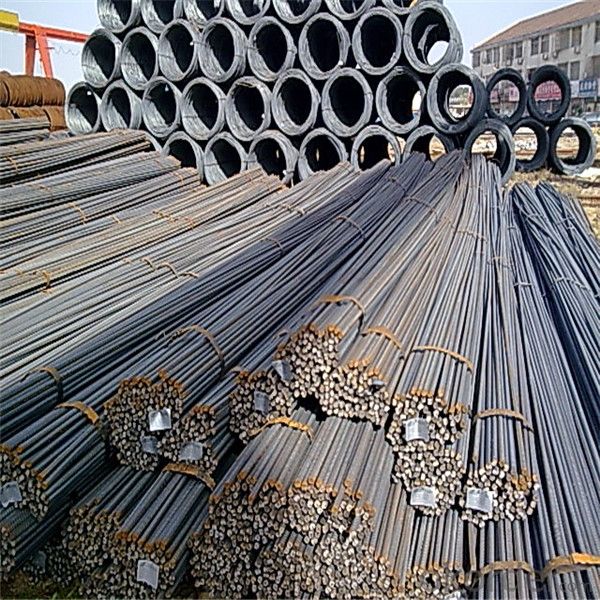
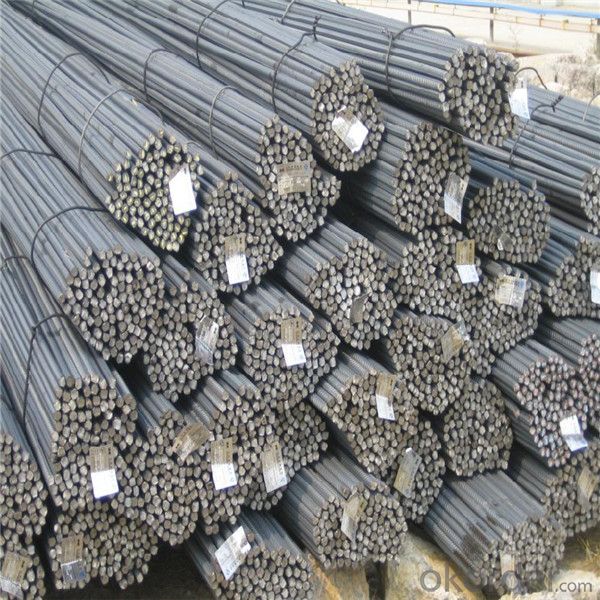
Packing:
In bundles, each bundle weight 3.5 tons. Load by container or by bulk verssel.
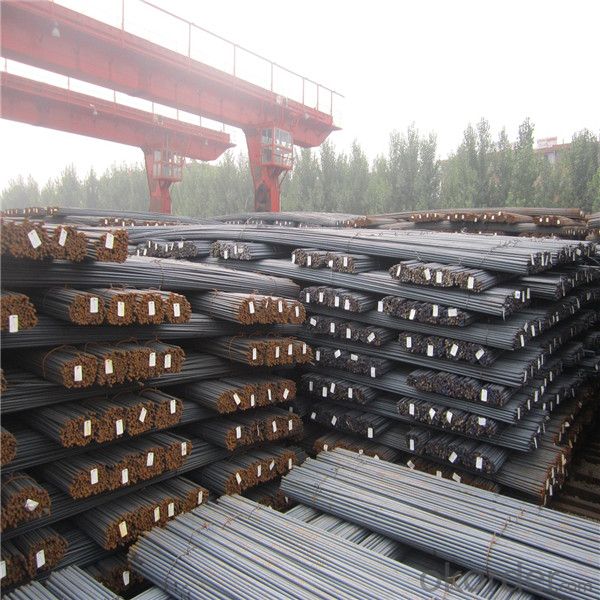
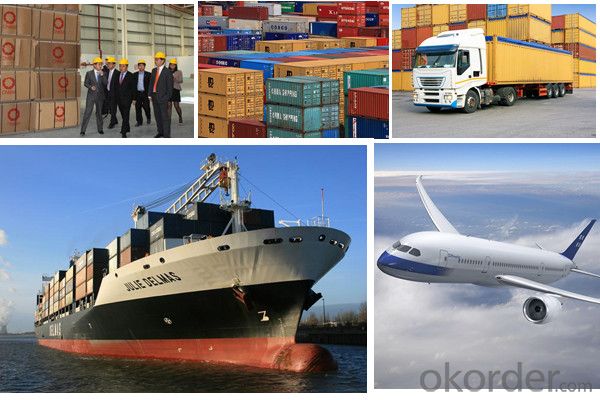
Our service
(1) We cooperate with famous factories with advanced equipment and well trained workers.
(2) We can provide factory price with trading company service.
(3) We continuously work on the improvement of our processes, guaranteeing consistently high standards
of quality to keep none compensation.
(4) We guarantee 24 hours response and 48 hours solution providing service.
(5) We accept small order quantity before formal cooperation.
(6) We deliver the agreed quality at the agreed time, reacting to changes in customer wishes in a flexible way.
(7) Due to our volume and selling power, we have excellent freight rates with shipping lines.
(8) We strive to always be fair and honest in our dealings with customers.
(9) We strive to work together with customers to achieve much more than we can achieve alone.
(10) Through our passion and commitment we aim to be a market leader in all our key markets. To maintain
our position as market leader we must continue to add value in all that we do.
FAQ:
1.Q: What's your MOQ(minimum order quantity)?
A: One full container, mixed acceptable .
2. Q: What's your packing methods?
A: Packed in bundle or bulk ..
3. Q: How can I buy CNBM products in my country?
A:Please send us an inquiry or email ,we will reply to you if there is distributor in your country
4. Q: Can we visit your factory?
A: Warmly welcome. Once we have your schedule, we will arrange the professional sales team to follow up your case.
5. Q: How long does it take to get the product if i place an order?
A:With the process of your requirements,we will pack and deliver in 3-7 days. If it is by sea shipment,it will take 15-45 days depending on different locations
- Q: Can steel rebars be used in offshore platform construction?
- Yes, steel rebars can be used in offshore platform construction. They are commonly used as reinforcement in concrete structures, providing strength and durability to withstand the harsh offshore environment and support the weight and loads of the platform.
- Q: How do steel rebars contribute to the crack control in slabs and walls?
- Steel rebars contribute to crack control in slabs and walls through their ability to resist tensile forces. When concrete slabs and walls experience loads, such as the weight of the structure or external forces, they may develop tensile stresses. Concrete is strong in compression but weak in tension, making it prone to cracking under tensile forces. Steel rebars are embedded within the concrete to counteract these tensile stresses. By absorbing and distributing the tensile forces, rebars help to prevent crack formation and control their propagation. The rebars act as reinforcement, increasing the overall tensile strength of the concrete. The presence of steel rebars in slabs and walls helps to limit the width and length of cracks that may occur by providing resistance against the tensile stresses. This crack control is crucial for maintaining the structural integrity and durability of the concrete elements. Furthermore, steel rebars can also contribute to crack control by improving the overall ductility of the structure. Ductility refers to the ability of a material to deform under load without fracturing. By enhancing the ductility of the concrete, the rebars allow the structure to absorb energy and deform in a controlled manner, reducing the likelihood of sudden failure or catastrophic collapse. In summary, steel rebars play a vital role in crack control in slabs and walls by increasing the tensile strength of concrete, limiting crack width and length, and improving overall structural ductility. Their presence ensures the long-term durability and safety of these concrete elements.
- Q: What are the different types of steel rebars used in earthquake-prone regions?
- Various types of steel rebars are utilized in earthquake-prone regions to bolster the structural integrity and resilience of buildings. These rebars are specifically engineered to withstand the formidable forces generated during seismic events, thereby mitigating the risk of structural failure. The commonly employed steel rebars in earthquake-prone regions encompass the following: 1. Mild Steel Rebars (MSR): Also known as carbon steel rebars, MSR rebars are the most frequently utilized due to their affordability and widespread availability. They possess a relatively low yield strength, typically ranging from 250 to 420 megapascals (MPa). While they provide basic reinforcement, they are not specifically designed to endure intense seismic forces. 2. High-Strength Deformed Bars (HSD): HSD rebars exhibit significantly higher yield strength compared to MSR rebars, typically ranging from 415 to 600 MPa. Manufactured through subjecting carbon steel to additional heat treatment and controlled cooling, HSD rebars demonstrate improved strength and ductility. They possess enhanced resistance against seismic forces and are commonly employed in earthquake-prone regions. 3. Stainless Steel Rebars (SSR): SSR rebars exhibit remarkable resistance to corrosion and possess excellent strength characteristics. They are commonly employed in coastal earthquake-prone regions where exposure to saltwater or corrosive environments is a concern. SSR rebars offer enhanced durability and longevity, thereby reducing the risk of structural damage caused by corrosion over time. 4. Fiberglass Rebars: Also known as FRP (fiber-reinforced polymer) rebars, fiberglass rebars represent non-metallic alternatives for reinforcement that are gaining popularity in earthquake-prone regions. Composed of glass fibers embedded in a polymer resin matrix, FRP rebars demonstrate excellent resistance to corrosion, rendering them suitable for coastal regions. Although they possess lower strength compared to steel rebars, FRP rebars exhibit high tensile strength, making them a viable option for seismic reinforcement. 5. Galvanized Rebars: Galvanized rebars encompass carbon steel rebars coated with a layer of zinc to enhance corrosion resistance. The zinc coating acts as a sacrificial layer, affording protection to the underlying steel against corrosion. While galvanized rebars are not specifically engineered for seismic resistance, they offer improved durability in earthquake-prone regions characterized by high moisture or corrosive conditions. It is important to highlight that the selection of steel rebars in earthquake-prone regions hinges upon a multitude of factors, including seismic activity levels, building codes and regulations, budgetary constraints, and specific project requirements. Consulting with structural engineers and adhering to local building codes is crucial in determining the appropriate type of steel rebars for seismic reinforcement, thereby ensuring the safety and resilience of structures in these regions.
- Q: Can steel rebars be used in railway track construction?
- Yes, steel rebars can be used in railway track construction. Steel rebars provide strength, durability, and resistance to corrosion, making them suitable for use in railway track infrastructure. They help reinforce the concrete structures used in the track bed and ensure stability and longevity of the railway tracks.
- Q: How are steel rebars spliced or connected in construction joints?
- In construction joints, steel rebars are typically spliced or connected using various methods to ensure the structural integrity and strength of the reinforced concrete. One common method is known as lap splicing, where the rebars are overlapped and then mechanically connected or tied together using steel wires or couplers. The length of the overlap required for lap splicing depends on the diameter of the rebars and the design specifications. It is usually specified in terms of the rebar diameter or as a multiple of it. The overlapping length ensures that the load transfer between the two rebars is efficient and prevents any potential failure at the connection point. Another method of splicing steel rebars is the use of mechanical couplers. These couplers are pre-fabricated devices that are designed to connect two rebars together securely. They eliminate the need for lap splicing and provide a more precise and reliable connection. Mechanical couplers are particularly useful in situations where the rebar size is larger or where it is not feasible to have long lap lengths. Additionally, in some cases, welded splicing may be used. This method involves welding the ends of the rebars together, creating a solid and continuous connection. Welded splicing is commonly used when the rebars are larger in diameter, and the joint needs to withstand higher loads. However, it is essential to ensure that proper welding techniques and practices are followed to maintain the integrity of the connection. Overall, the splicing or connection of steel rebars in construction joints is a critical aspect of reinforced concrete construction. It ensures that the rebars act as a continuous reinforcement, allowing the structure to resist applied loads effectively. The choice of splicing method depends on factors such as rebar size, design specifications, and project requirements.
- Q: How do steel rebars affect the construction cost of high-rise buildings?
- Steel rebars have a significant impact on the construction cost of high-rise buildings. These reinforced steel bars are essential for providing strength and stability to the structure, especially in high-rise buildings that face greater structural loads. Firstly, the cost of steel rebars themselves can be a substantial portion of the overall construction budget. The price of steel rebars is subject to market fluctuations, and as such, any increase in steel prices can directly impact the construction cost. Additionally, the quantity and quality of rebars required for a high-rise building are typically higher compared to low-rise structures, further contributing to the overall cost. Moreover, the installation of steel rebars involves skilled labor and specialized equipment, which adds to the construction cost. The process of reinforcing concrete with steel rebars requires careful planning, precise placement, and adherence to construction codes and safety standards. This necessitates the employment of experienced and qualified workers, resulting in higher labor costs. Furthermore, the use of steel rebars helps improve the durability and longevity of high-rise buildings. By providing reinforcement, rebars enhance the structural integrity of the building, making it more resistant to various forces such as earthquakes, wind, and vibrations. This, in turn, reduces the maintenance and repair costs over the building's lifespan, making the initial investment in steel rebars a worthwhile expense. Lastly, steel rebars contribute to the overall construction timeline and project schedule. As a critical component of the building's structure, the installation of rebars is typically time-consuming. Delays or errors in this process can result in project delays and additional costs. Therefore, proper planning, coordination, and supervision are essential to ensure the efficient and timely installation of rebars, minimizing any potential cost overruns. In conclusion, steel rebars play a crucial role in the construction of high-rise buildings, affecting the overall cost significantly. While the direct cost of rebars themselves, labor, and specialized equipment contribute to the construction expenses, their use ultimately enhances the building's strength, durability, and longevity. Therefore, considering the long-term benefits and the importance of structural integrity, the inclusion of steel rebars is necessary, despite their impact on the construction cost.
- Q: How do steel rebars affect the overall construction cost of industrial buildings?
- The overall construction cost of industrial buildings can be significantly influenced by steel rebars. These rebars are utilized to reinforce concrete structures, providing strength and durability. The cost is directly affected by the amount of steel rebars required in a building project, as the price of steel is a major component of the overall construction expenses. To begin with, the size, design, and complexity of the industrial building determine the quantity of rebars needed. Larger buildings or those with intricate architectural features may necessitate a greater number of rebars, resulting in increased costs. Furthermore, the design and engineering requirements for seismic or wind resistance can also impact the quantity of rebars, thus affecting the construction budget. Furthermore, the cost can be influenced by the quality and grade of the steel rebars used. Higher-grade rebars, such as those with superior tensile strength or corrosion resistance, may entail higher expenses. Nevertheless, the utilization of higher-grade rebars can provide long-term benefits by enhancing the structural integrity of the building and reducing maintenance and repair costs throughout its lifespan. Additionally, transportation and handling costs contribute to the overall cost. Steel rebars are heavy and bulky, necessitating careful handling and transportation to the construction site. The distance between the steel supplier and the site can have a significant impact on transportation costs. Moreover, the storage and protection of rebars on-site must be considered to ensure their quality, which may result in additional expenses. Lastly, labor costs associated with the installation of steel rebars should be taken into account. Skilled labor is required to accurately place and tie the rebars according to design specifications and building codes. The complexity of the reinforcement design can affect the time required for installation, ultimately influencing labor costs. In conclusion, steel rebars are of utmost importance in the construction of industrial buildings as they reinforce concrete structures. The quantity, quality, transportation, and labor costs associated with steel rebars directly affect the overall construction cost. Therefore, careful planning and consideration of these factors are necessary to effectively manage the budget of industrial building projects.
- Q: Can steel rebars be used in historical bridge restoration?
- Historical bridge restoration projects can benefit from the use of steel rebars. Over time, many historical bridges may have experienced deterioration or damage, and steel rebars can play a crucial role in providing strength and stability during the restoration process. Reinforced concrete structures often rely on steel rebars, which effectively reinforce the structural integrity of the bridge. Nevertheless, it is essential to carefully consider the historical bridge's aesthetics and guarantee that the incorporation of steel rebars does not compromise its historical value or appearance. Preservation guidelines and consultations with historical experts can prove invaluable in determining the suitable application of steel rebars in historical bridge restoration endeavors.
- Q: How do steel rebars perform in seismic zones?
- Steel rebars perform well in seismic zones due to their high tensile strength and ductility. They can withstand the intense forces and vibrations generated during earthquakes, effectively reinforcing and strengthening concrete structures. The use of rebars helps prevent structural failure and ensures the safety and stability of buildings in seismic-prone areas.
- Q: Can steel rebars be used in the construction of data centers and IT facilities?
- Yes, steel rebars can be used in the construction of data centers and IT facilities. Steel rebars are commonly used in construction projects to reinforce concrete structures, providing strength and durability. In data centers and IT facilities, where heavy equipment and servers are installed, the use of steel rebars can help ensure the stability and structural integrity of the building.
Send your message to us
Steel rebar 12mm 16mm for real estate constraction
- Loading Port:
- Tianjin
- Payment Terms:
- TT OR LC
- Min Order Qty:
- 100 m.t.
- Supply Capability:
- 18000 m.t./month
OKorder Service Pledge
OKorder Financial Service
Similar products
Hot products
Hot Searches
Related keywords
